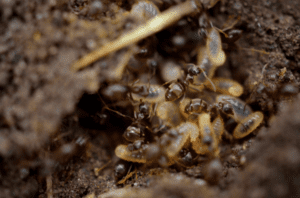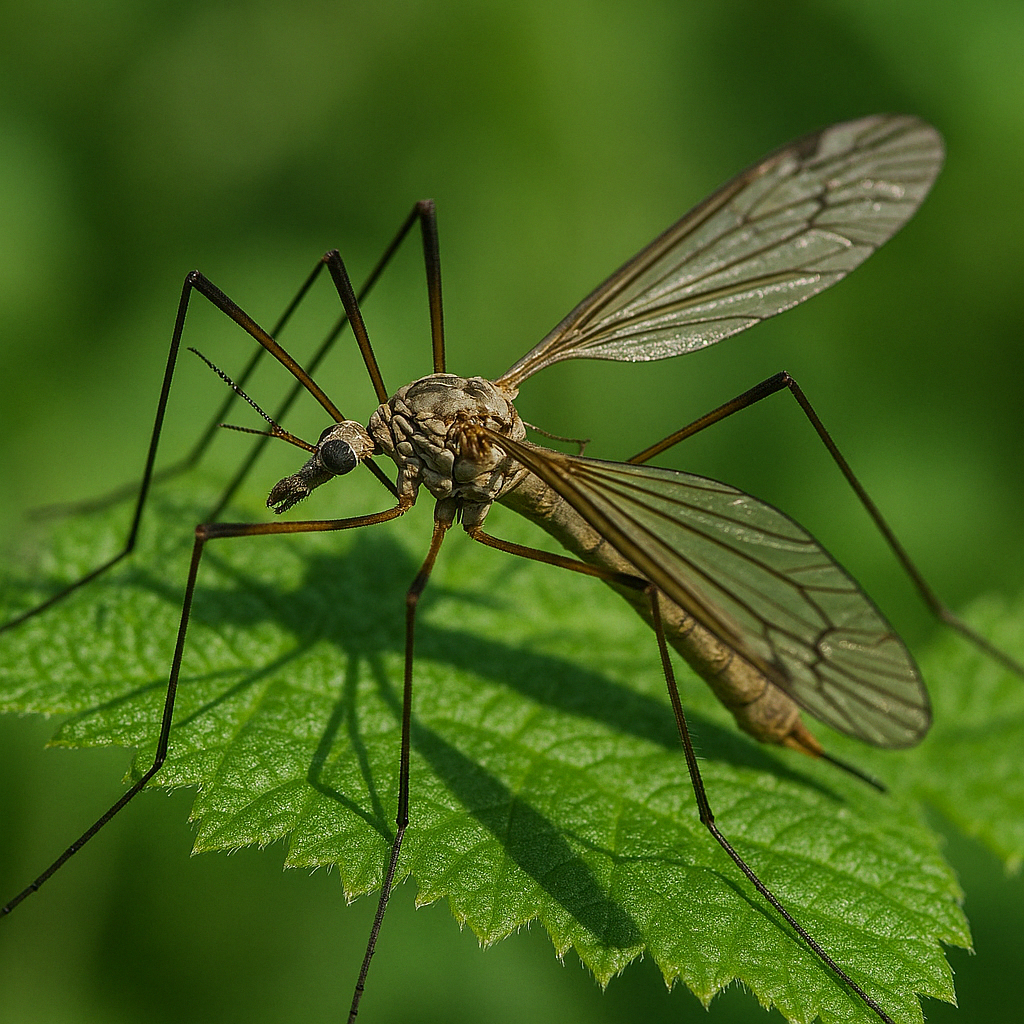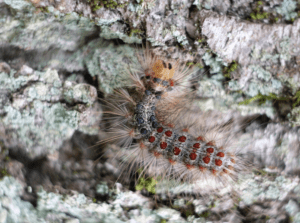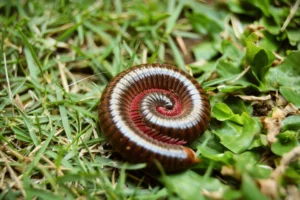

Mosquito hawks, commonly known as crane flies, are often mistaken for giant mosquitoes or mosquito predators. Many people believe they help control mosquito populations, but this is a myth. In this article, we’ll debunk common misconceptions about mosquito hawks, explain their true role in the ecosystem, and provide science-backed mosquito control solutions. If you're dealing with real mosquito problems, understanding the facts- and using proper pest control methods- is essential for effective prevention and management.
What Are Mosquito Hawks?
Mosquito hawks, commonly known as crane flies, belong to the family Tipulidae. Their scientific name broadly encompasses many species within this family, but they are generally referred to as Tipula species. Crane flies are often mistaken for large mosquitoes due to their slender bodies, long legs, and delicate wings. However, they are typically much larger than mosquitoes, with wingspans that can range from 1 to 3 inches, depending on the species. Their bodies are usually light brown or gray, and they have long, fragile legs that easily detach when handled.
One of the key distinguishing characteristics of crane flies is their V-shaped suture on the thorax and a lack of scales on their wings, unlike true mosquitoes. They also possess a non-piercing mouthpart, which sets them apart from their blood-feeding lookalikes. Crane flies are often confused with mosquitoes because of their similar body structure and flight patterns. This resemblance, combined with their larger size, has led to the popular nickname "mosquito hawks." Many people incorrectly assume they prey on mosquitoes, inspired by the predatory implication of the term “hawk.” Their clumsy, hovering flight and nighttime activity further contribute to this common misidentification.
Do Mosquito Hawks Really Eat Mosquitoes?
mosquito hawks do not eat mosquitoes. Despite their nickname, mosquito hawks- more accurately known as crane flies- do not prey on mosquitoes at any stage of their life cycle. This common myth likely arose due to their superficial resemblance to oversized mosquitoes and the predatory implication of the term “hawk.” However, scientific evidence shows that crane flies have no interest in hunting mosquitoes.
Adult crane flies possess non-functional mouthparts and do not feed at all or only consume nectar. They lack the piercing, sucking mouthparts that mosquitoes use to feed. Their primary purpose as adults is reproduction, and they live only a few days to a week. Furthermore, crane fly larvae, often called leatherjackets, live in moist soil and primarily feed on decaying plant material and roots, not other insects. Entomologists and experts, including those at university agricultural extensions, consistently confirm that crane flies are harmless to humans and other insects, including mosquitoes. Therefore, the idea that mosquito hawks help control mosquito populations is a misconception. Their role in the ecosystem is more about decomposing organic matter and serving as food for other wildlife, rather than being mosquito predators.
What Do Mosquito Hawks Actually Eat?
Crane flies, commonly known as mosquito hawks, have distinct dietary habits in their larval and adult stages. The larval stage, often referred to as leatherjackets, is when crane flies are most active feeders. Crane fly larvae primarily consume plant material, including grass roots, seedlings, and decaying organic matter found in soil. This diet plays an important ecological role by breaking down decomposing vegetation and recycling nutrients back into the soil. However, in some cases, particularly in lawns and agricultural areas, large populations of crane fly larvae can damage turfgrass and crops by feeding on the roots.
In contrast, adult crane flies typically do not feed at all. Once they emerge from their pupal stage, their primary biological purpose is reproduction, not nourishment. Adult crane flies have very short lifespans- often just a few days- and their mouthparts are either vestigial (non-functional) or adapted solely for minimal liquid intake, such as nectar, if they feed at all. This lack of feeding behavior is why adult crane flies do not contribute to controlling pest populations like mosquitoes, nor do they cause damage to plants. Their brief, non-feeding adult phase is entirely focused on mating and laying eggs to continue their life cycle.
Why Do People Think Mosquito Hawks Eat Mosquitoes?
The misconception that mosquito hawks eat mosquitoes stems from a combination of their appearance, misleading name, and widespread misinformation. Crane flies, commonly called mosquito hawks, closely resemble oversized mosquitoes due to their slender bodies, long legs, and delicate wings. For many people, this visual similarity immediately links them to mosquitoes, and their larger size leads to the assumption that they might prey on smaller insects like mosquitoes. The nickname "mosquito hawk" further fuels this misunderstanding. The term “hawk” suggests a predator, so people often assume crane flies hunt mosquitoes much like hawks hunt smaller birds. However, the name is purely colloquial and not based on their actual behavior or diet.
Additionally, misinformation passed down through generations or spread online reinforces the myth. Many believe that because crane flies look like mosquitoes and are harmless to humans, they must serve a beneficial purpose, such as controlling mosquito populations. In reality, neither adult crane flies nor their larvae feed on mosquitoes. The adults don't eat at all or may sip nectar, while the larvae feed on plant roots and decaying matter. Despite expert clarification, the persistent myth continues due to these combined factors of appearance, name, and lack of public awareness.
Are Mosquito Hawks Beneficial or Harmful?
Mosquito hawks, or crane flies, play a minor but important role in the ecosystem, though their impact can vary depending on their life stage and population size. As larvae, known as leatherjackets, crane flies contribute to soil health by breaking down decaying organic matter and recycling nutrients. This helps maintain soil structure and fertility, supporting plant growth and promoting decomposition.
However, in some agricultural settings and well-maintained lawns, large populations of crane fly larvae can become problematic. Their feeding habits extend to the roots and stems of grasses, seedlings, and crops. In turfgrass, heavy infestations can result in brown patches, weakened grass, and reduced crop yields. For this reason, crane fly larvae are occasionally considered pests, particularly in regions where conditions favor their proliferation.
Adult crane flies, on the other hand, pose no direct threat. They do not bite, sting, or feed on plants or other insects. Their primary role is reproduction, and they serve as a food source for birds, spiders, and other predators. Overall, crane flies are generally harmless and beneficial in natural environments but may require management in agricultural or lawn settings where their larvae become overly abundant. In most cases, they should not be considered serious pests.
How to Effectively Control Mosquitoes (Since Mosquito Hawks Won’t Help!)
Effective mosquito control requires a combination of natural methods, environmental management, and targeted repellents. One of the most impactful strategies for preventing mosquito infestations is eliminating standing water, as mosquitoes lay eggs in stagnant water sources like birdbaths, clogged gutters, and puddles. Regularly emptying or treating these areas with larvicides can significantly reduce mosquito populations.
Introducing natural predators, such as dragonflies, bats, or mosquito-eating fish like gambusia, can also help keep mosquito numbers in check. Additionally, landscaping with plants that repel mosquitoes like citronella, lavender, or marigolds around outdoor areas can provide some deterrent effect. Using proven repellents containing DEET, picaridin, or oil of lemon eucalyptus is highly recommended for personal protection, especially during peak mosquito activity times at dawn and dusk. Installing physical barriers like window screens and using fans in outdoor spaces can further reduce mosquito bites.
For large properties, high-risk areas, or commercial sites, professional mosquito control services are often necessary. These experts can conduct thorough inspections, apply targeted treatments such as barrier sprays, and implement integrated pest management plans to ensure long-term mosquito reduction. Combining these practical, science-backed solutions creates a multi-layered defense against mosquitoes, offering both immediate relief and sustainable control.
The Truth About Mosquito Hawks
In summary, mosquito hawks, or crane flies, are often mistaken for mosquito predators due to their appearance and misleading nickname, but they do not eat mosquitoes at any stage of their life cycle. Adult crane flies do not feed at all, while their larvae consume plant roots and decaying organic matter—not other insects. Though harmless to humans, crane fly larvae can sometimes cause minor lawn or crop damage, but they are not effective mosquito control agents.
Relying on the myth that mosquito hawks control mosquito populations can leave you vulnerable to real mosquito problems. Instead, it's essential to implement proven mosquito management strategies, such as removing standing water, using EPA-approved repellents, and encouraging natural predators. For more serious infestations, Twin-Boro’s professional residential pest control and commercial pest control services offer targeted, effective solutions to protect your property and health.
If you're facing mosquito issues or want expert advice tailored to your specific situation, don’t depend on myths- take action with methods backed by science. For reliable and comprehensive mosquito control services, contact us today and let our team help you maintain a pest-free environment, whether it's your home, business, or large commercial property.






